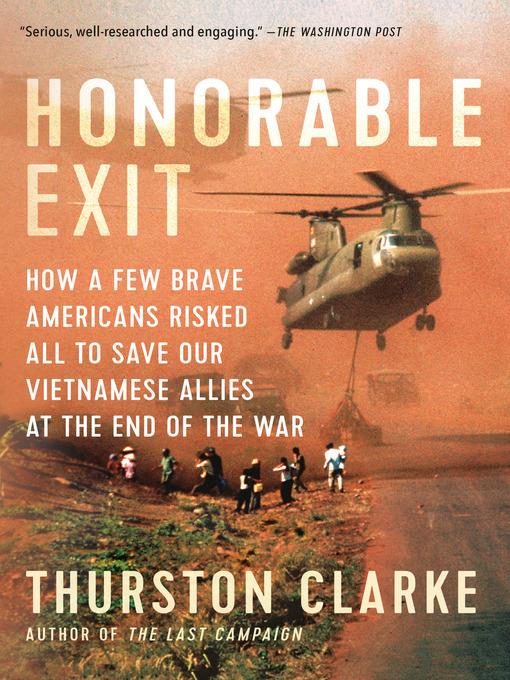
Honorable Exit
How a Few Brave Americans Risked All to Save Our Vietnamese Allies at the End of the War
کتاب های مرتبط
- اطلاعات
- نقد و بررسی
- دیدگاه کاربران
نقد و بررسی

March 1, 2019
A detailed account of the last desperate days of the American presence in Vietnam.Clarke (JFK's Last Hundred Days: The Transformation of a Man and the Emergence of a Great President, 2013, etc.) begins his harrowing narrative with Dutch photojournalist Hugh van Es' famous photograph of people lined up on a stairway to the roof of 22 Gia Long St. in Saigon, being helped into a helicopter by a man in a white shirt and dark pants. While this shot has become "the last great photograph" of an ignoble war Americans "have spent decades trying to forget," the author sees the gesture of the U.S. Embassy's deputy air operations officer, O.B. Harnage, as he reaches out to help evacuating Vietnamese, as noble, even heroic. Indeed, many of the U.S. personnel at the bitter end of American occupation went to great personal and professional lengths, often illegally, to help the approximately 130,000 Vietnamese who made it out. On one hand, these Americans knew that anyone connected to the U.S. or to the administration of President Nguyen Van Thieu, which was bolstered by the U.S., would suffer serious reprisals when the Communists arrived. On the other hand, some officials, including Ambassador Graham Martin, believed that "any indication that the United States was preparing an evacuation would demoralize South Vietnam's military." Clarke methodically traces the "omens" that showed the writing on the wall of South Vietnam's capitulation--e.g., the fall of Phuoc Binh, north of Saigon, in January 1975 or the American decision to halt the allocation of any more financial aid or military support. The Paris Peace Accords of January 1973, which had led to a cease-fire, had been unceremoniously violated by both sides, and America had had enough. In the end, despite persistent finger pointing, Secretary of State Henry Kissinger became insistent that the U.S. had a moral obligation to evacuate South Vietnamese allies. Moving to a hair-raising climax, Clarke meticulously sifts through hasty evacuation measures and relates the sad stories of those who did not make it out.A welcome addition to the literature on the Vietnam War.
COPYRIGHT(2019) Kirkus Reviews, ALL RIGHTS RESERVED.

March 1, 2019
Images of Vietnamese fighting to get aboard the last helicopter evacuating Americans during the fall of Saigon are branded in our minds, but New York Times best-selling author Clarke tells a revisionist story. Here he recounts how American diplomats, businessmen, soldiers, missionaries, contractors, and spies took great risks to help 130,000 current and former translators, drivers, colleagues, neighbors, friends, and even strangers escape to U.S. bases in Guam and the Philippines. It's billed as our Dunkirk; lovers of that movie and Argo will be targeted along with veterans' associations, Vietnam and other war memorial museums, and historians specializing in the era.
Copyright 2018 Library Journal, LLC Used with permission.

























دیدگاه کاربران